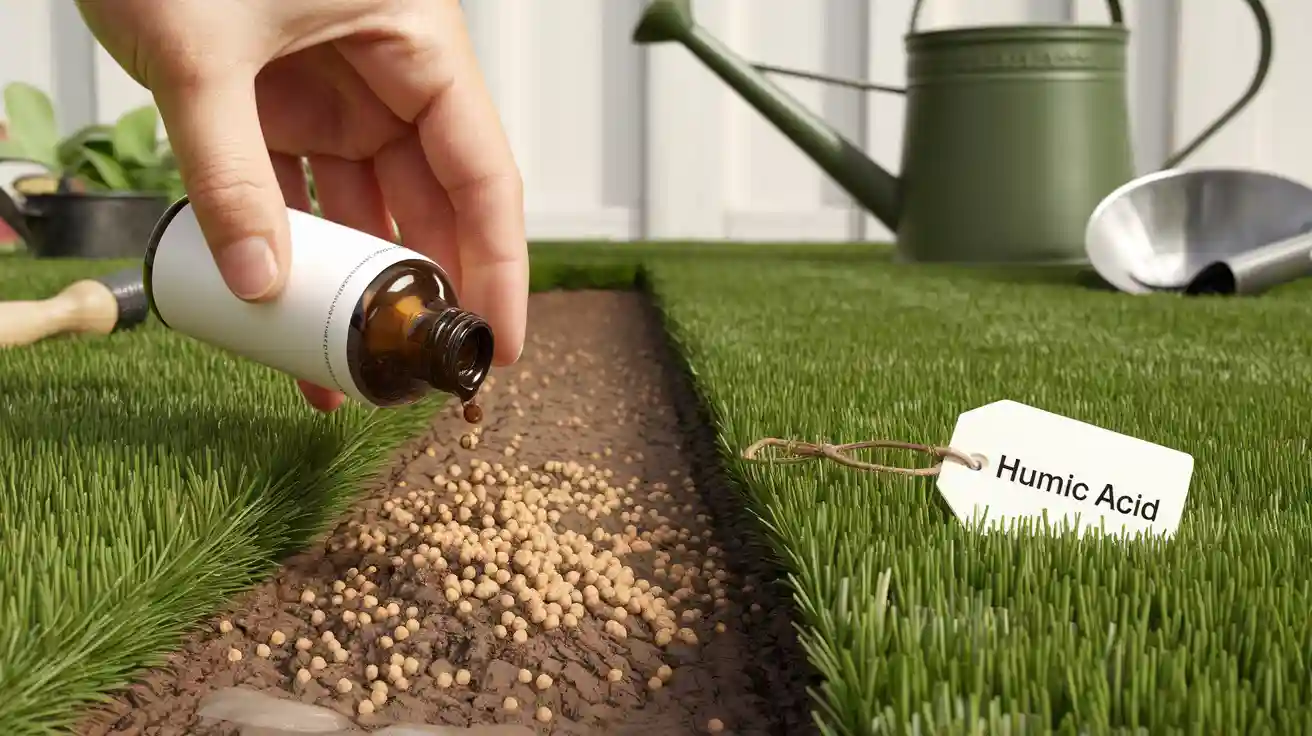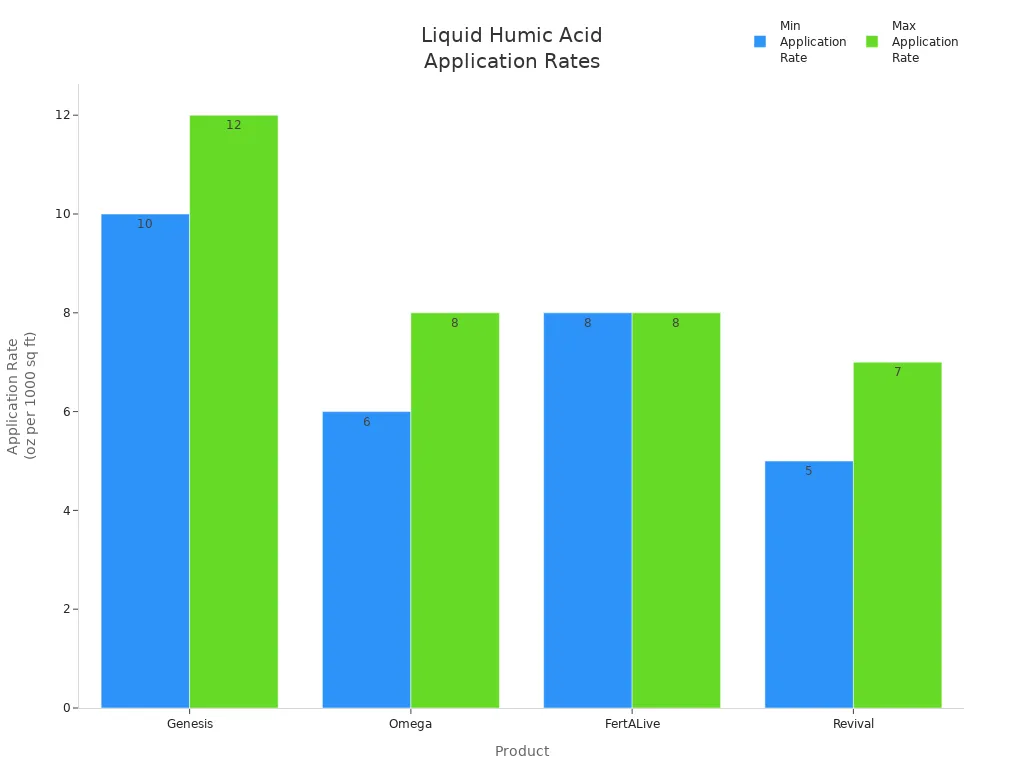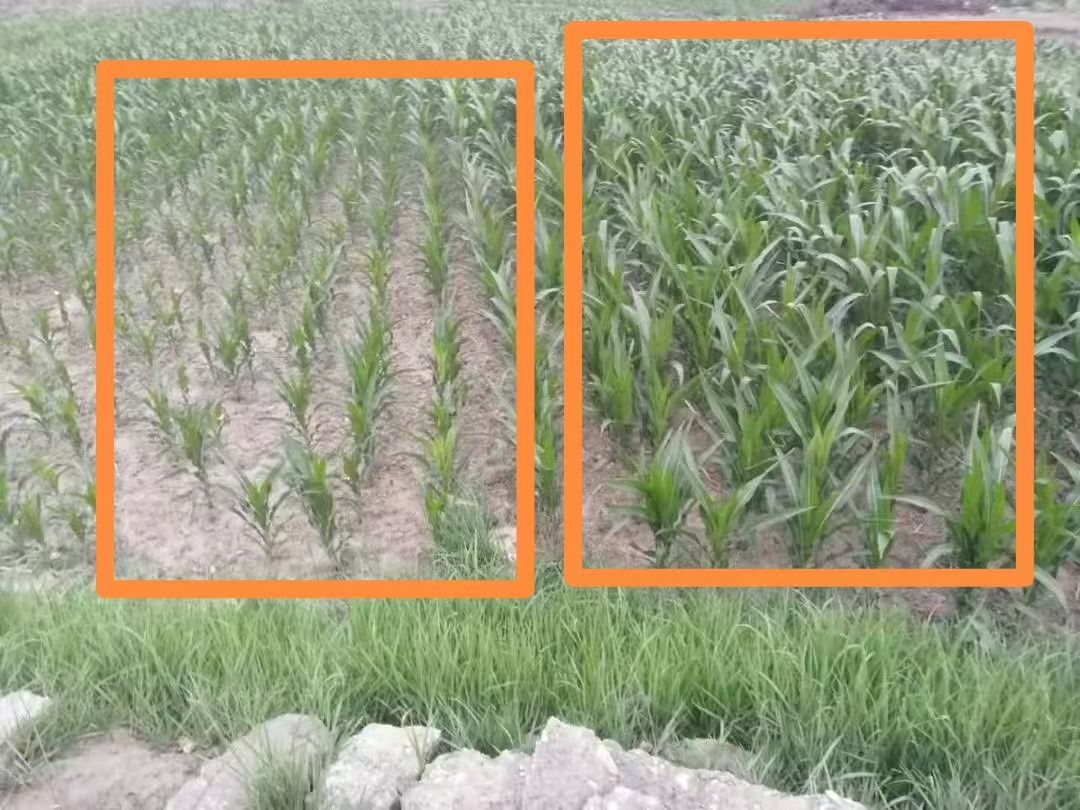A beginner’s guide to using humic acid for a healthy lawn

Humic acid for lawns acts as a powerful natural soil booster. You add it to your garden to give your grass the best chance at a healthy lawn. Scientists have found that humic acid improves soil structure and aeration. It helps your grass roots absorb water and nutrients more easily. Soil microbes thrive with humic acid, which means your lawn can grow stronger and greener. You can use humic acid safely, and it is simple to apply even if you are new to lawn care.
Key Takeaways
Humic acid is a natural soil booster. It helps grass roots take in water and nutrients better.
It makes soil structure better by holding soil particles together. This lets air and water move easily.
Using humic acid helps soil keep more water. This helps lawns live through dry and hot weather.
Humic acid helps roots grow strong. It makes plants create growth hormones.
It helps good soil microbes grow. These microbes break down dead plants and give nutrients to grass.
You can use humic acid as a liquid or as granules. Each type has its own good points and ways to use it.
Put humic acid on your lawn during the growing season. Do this every 4–6 weeks. Water your lawn after you use it.
Do not use too much humic acid. Do not mix it with harmful chemicals. This keeps your lawn safe and healthy.
Beginner's guide
What is humic acid?
When you start learning about lawn care, you might hear about humic acid. Humic acid is a natural product that comes from old plants breaking down over time. It is a strong humate, which means it helps your soil and grass grow better. As a humate, it has special molecules with acidic parts called carboxylic and phenolic groups. These parts help humic acid connect with nutrients and soil pieces.
Humate molecules are more complex than other soil amendments. They have protein-like, sulphur-containing, and sugar-like structures. This makes humic acid a good soil conditioner. It helps your soil keep water and nutrients. Humic acid is different from things like biochar, which has another chemical makeup and works in other ways.
Tip: If you are just starting, think of humic acid as a helper. It connects your soil to the nutrients your grass needs. This makes your soil richer and helps your lawn grow well.
Where does it come from?
You may wonder where humic acid comes from. Most humate for lawns comes from things like old coal, lignite, peat, and leonardite. These materials form when plants break down underground for thousands of years. The best humic acid is found in places like Xinjiang, China, where it can be over 70% pure.
People take humic acid from these materials and turn it into different products. You can buy humate as powder, granules, or liquid. These forms make it easy to use humic acid on your lawn. Because humate comes from nature, it is safe and works well in your garden.
How does it work?
Humic acid helps your soil and plants in many ways. As a humate, it acts like a chelating agent. This means it holds onto important nutrients like nitrogen and micronutrients. It stops them from washing away and makes them easier for grass roots to use. The special structure of humic acid, with carboxylic and phenolic groups, helps move these nutrients into the roots.
Humic acid also helps your plants make growth hormones like auxins and cytokinins. These hormones help roots grow, cells divide, and plants make food from sunlight. This makes your lawn thicker and greener.
Humic acid makes soil better by helping it hold together, keep water, and let air in. This lets roots grow deeper and get more water and nutrients. It also helps good microbes in the soil. These microbes break down dead plants and give out nutrients, making the soil healthier.
Humic acid boosts soil enzyme activity, which shows healthy microbes are there.
It changes the microbes in the soil, bringing in more good fungi and helping nutrients move around.
It increases the amount of nitrogen, phosphorus, and potassium in the soil.
When you use humate on your lawn, you make the soil healthier. Your grass can handle stress, fight disease, and grow stronger. Even if you are new to lawn care, you can use humic acid to help your garden do better.
Humic acid for lawns
Key benefits
When you use humic acid for lawns, your grass gets many benefits. It helps your grass look better and stay strong. As a natural humate, it links nutrients to roots. This supports good microbes and makes soil healthier. The benefits are more than just fertilising. You will see better soil, more nutrients for grass, more water in the soil, stronger roots, and more microbes.
Soil structure
Humate sticks soil pieces together. This makes the soil form stable clumps. These clumps let air and water move better. Your grass roots can grow deeper and the soil is less hard. Water and nutrients move through the soil more easily. Your grass will look healthier and stronger.
Humic acid for lawns helps soil clumps stay together.
It lets water drain and air move, so soil does not get soggy.
Good soil structure helps roots grow deep and fight dry weather.
Nutrient uptake
You want your grass to get lots of nutrients. Humate grabs important nutrients and keeps them near the roots. This stops nutrients from washing away. Your grass gets a steady supply of food. Humic acid for lawns also helps good microbes break down dead plants. This gives your grass more food it can use.
Humate helps roots grow bigger and thicker, so they take in more nutrients.
It helps the soil hold nutrients close to the roots.
Using humic acid for lawns turns nutrients into forms plants can use.
Water-holding capacity
Holding water is important for a healthy lawn, especially when it is dry. Humate helps the soil keep more water by making it more sponge-like. This means your grass stays wet longer and you do not need to water as much. More water in the soil helps grass live through dry and hot times.
Humic acid for lawns helps soil hold up to three times more water.
It stops water from drying up fast and helps water soak in.
Your grass can handle dry weather better and does not get stressed as much.
Root growth
Strong roots help your lawn stay healthy. Humate helps roots grow by making the plant produce special hormones. These hormones help roots grow more hairs and branches. Lawns with humic acid for lawns have bigger and stronger roots than lawns without it.
Treated grass grows deeper and larger roots.
Better roots help grass take in more water and nutrients.
Your lawn can handle tough weather, like heat and drought, better.
Microbial activity
Healthy soil needs lots of good microbes. Humate feeds these microbes and makes the soil better for them. More microbes break down dead plants faster and help move nutrients around. Your grass gets more food and the soil stays healthy.
Humic acid for lawns helps good bacteria and fungi grow.
It stops bad germs and helps plants fight disease.
More microbes fix damaged soil and keep it healthy for a long time.
Water holding capacity
Water holding is very important for healthy soil and green grass. When you use humic acid for lawns, the soil can keep more water. Humate from lignite makes the soil hold water longer and stops it from drying out fast. Tests show that humic acid for lawns can help soil take in 10% more water and lose 30% less to evaporation. This means your grass gets steady water, even when it does not rain much.
You will see that humic acid for lawns helps soil keep water and nutrients for longer. This helps roots grow well and stops grass from drying out. Your lawn stays green and strong all season.
Note: Using humate often keeps your lawn healthy. It helps the soil hold water, makes the soil better, and helps your grass grow well.
Product types
When you pick a humate for your lawn, you will see two main kinds: liquid and granular. Each kind works in its own way and has special uses. Knowing the differences helps you choose the best one for your lawn.
Liquid humic acid
Liquid humic acid acts fast. You spray it or mix it with water. The tiny bits in this humate dissolve quickly. Your lawn takes in nutrients almost right away. Many people use liquid fertiliser when they want quick results or need to help their lawn during the growing season.
You can check normal use rates for liquid humic acid in the table below:
Product(s) | Application Rate (oz per 1000 sq ft) | Dilution Ratio (product:water) | Timing/Notes |
|---|---|---|---|
Genesis | 10–12 | 1:20 | Spring soil conditioner |
Omega | 6–8 | 1:20 | Summer soil activator (used with FertALive) |
FertALive | 8 | 1:30 | Summer fertiliser (used with Omega) |
Revival | 5–7 | 1:20 | Fall lawn revival |

Pros and cons
Pros:
It gets into the grass fast and works quickly.
Spraying liquid fertiliser covers the lawn evenly.
You can mix liquid humic acid with other lawn products.
Cons:
You must use it more often to keep seeing results.
You need to spray carefully to avoid patchy spots or burning.
Liquid products can spill or freeze, so storing them is harder.
Granular humic acid
Granular humic acid comes as dry pellets or small grains. You spread these on your lawn and then water them in. This humate breaks down slowly, so it feeds your lawn over time. Many people pick granular fertiliser for long-lasting soil health.
Granular humic acid stays in the soil longer than liquid types. It breaks down bit by bit, giving your lawn humate for a long time. Some brands, like HGS BioScience, make granules that dissolve well and work with dry fertilisers. These granules have as much active content as liquid humic acid but last longer in the soil.
Pros and cons
Pros:
It gives a slow, steady supply of humate for lasting effects.
Granular fertiliser needs fewer applications.
Granules are easy to store and handle because they stay dry in bags.
Cons:
You must water the granules in for them to work best.
It takes longer to see changes, as nutrients release slowly.
If you spread them unevenly, you might get patchy grass or burnt spots.
Choosing a product
You should think about a few things when picking between liquid and granular humate:
Liquid fertiliser works fast, so it is good for a quick green lawn.
Granular fertiliser feeds slowly, which is better for long-term lawn health.
Liquid types need more frequent use and careful spraying.
Granules need even spreading and watering in.
Granules are easier to store, but liquids need careful handling.
Granular products often cost less over time because you use them less.
Always test your soil before picking a humate to match your lawn’s needs.
Sprayers are best for liquid fertiliser, and spreaders work for granules.
Your lawn goals matter: pick liquid for fast results, granules for steady care.
Tip: No one humate product is right for every lawn. Think about what you want, your soil, and how much time you have for lawn care. Brands like Harrell’s, BioAg, Gardener’s Supply Company, and Kelp4less sell both liquid and granular types, each with their own strengths and ingredients.
Application instructions

When to apply
You should use humate when your lawn is growing. For cool-season grasses, spring and autumn are best. These times help roots grow and take in nutrients. Granular humate works well in spring and autumn. Liquid humate is good for monthly use while grass grows. Warm-season grasses, like Bermuda grass, can get humate more often. You can use it every week to help fast growth and recovery from stress. Always check the soil temperature before you start. The best range is 13°C to 27°C (55–80°F).
Tip: Use humate when your grass is growing well. Do not use it when grass is resting or it is very hot. You will not see as many benefits.
How often
Using humate often keeps your lawn in good shape. Most lawns do well with humate every 4–6 weeks when growing. This helps the soil stay healthy and lets roots take in more nutrients. It also helps good microbes in the soil. For cool-season grasses, use humate each month in spring and autumn. Warm-season grasses may need it more, especially if your lawn is stressed or used a lot. Always read the label for exact advice.
Put humate on in spring and autumn for best results.
Use liquid humate each month for quick help.
Granular humate lasts longer, so you do not need it as often.
Add humate to your normal lawn care, like mowing, watering, and fertilising.
How to apply
Sprayer
Liquid humate is simple to use with a sprayer. Mix the product with water as the label says. Most brands say to use 6–12 ounces for every 1,000 square feet. Mix it with water at a 1:20 or 1:30 ratio. Use a backpack or hand sprayer to cover the lawn evenly. Walk slowly and spray in overlapping lines so you do not miss spots. Spray open areas and around plants for full coverage.
Product | Dilution Ratio (product : water) | |
|---|---|---|
Genesis | 10–12 | 1:20 |
Omega | 6–8 | 1:20 |
FertALive | 8 | 1:30 |
Revival | 5–7 | 1:20 |
Note: Always follow the label for mixing and using humate. Using too much will not hurt your lawn but wastes the product.
Granules
Granular humate is easy to spread with a broadcast spreader. Fill the spreader with the right amount and walk at a steady speed. This spreads the granules evenly. After spreading, water the lawn to help the granules break down and move into the soil. This helps nutrients reach the roots faster. For better results, mix granular humate with compost or organic matter. Lightly rake the mix into the soil and water again.
Use a broadcast spreader to spread granules evenly.
Water after spreading to start the humate working.
Mix with compost to make the soil healthier.
Tip: Make sure you cover the whole lawn. Overlap your passes with the spreader or sprayer. This stops patchy grass and helps humate work best.
Aftercare
Good aftercare helps you get the most from humic acid. It helps your lawn take in nutrients, keeps microbes healthy, and makes roots strong. You only need to follow a few easy steps.
Water lightly after application
Always water your lawn gently after using humic acid. This wakes up the humic acid and helps nutrients move into the soil. Light watering also helps good microbes grow. These microbes break down dead plants and give food to your grass.Keep the soil moist for 24 hours
Keep the soil damp for at least one day after you use humic acid. Wet soil lets humic acid work well and helps roots take in nutrients. Do not let the soil dry out too fast, especially when it is warm.Avoid peak heat when applying
Put humic acid on your lawn in the evening or early morning. Hot midday sun can stress your grass and make humic acid less useful. Cooler times help your grass recover and take in nutrients without extra stress.Aerate and cover in autumn
In autumn, poke holes in your lawn before using granular humic acid. After you spread the granules, cover the area with a thin layer of organic material, about 0.5 cm thick. This gives nutrients straight to the roots and makes the soil better as it gets cooler.Adjust for cold climates
If you live somewhere cold, use about 60% of the normal humic acid after the last cut before winter. Granules will slowly give out nutrients as snow melts. This protects roots and helps microbes stay active while the grass is resting.Combine with fertilisers for best results
Humic acid works well with most lawn fertilisers. It does not give nutrients like nitrogen or iron, but it helps unlock what is already in the soil. You can use humic acid with or just after fertilisers to help your grass take in more nutrients and keep the soil healthy. Many new fertilisers have humic acid in them for this reason.
Tip: Regular aftercare, like watering and checking soil moisture, helps humic acid work best. If you care for your lawn often, it will look greener and healthier.
Do not use too much humic acid. Using more does not help your lawn. Stick to the right amount and timing. Using too much wastes product and does not make your lawn better. Always read the label and follow the instructions for your lawn type.
Aftercare Step | Purpose | Timing |
|---|---|---|
Water lightly | Wakes up humic acid, helps microbes | Right after |
Keep soil moist | Helps roots take in nutrients | First 24 hours |
Avoid peak heat | Stops stress, helps uptake | Early morning/evening |
Aerate and cover (autumn) | Gives nutrients to roots, makes soil better | Autumn |
Adjust for cold climates | Protects roots, keeps microbes working | After last mowing |
Combine with fertilisers | Helps nutrients get to grass, boosts soil | With/after fertiliser |
If you follow these aftercare steps, your lawn will get the most from humic acid. You will help roots grow strong, keep soil healthy, and have bright green grass all year.
Tips and mistakes
Best practices
You can get the most from humic acid by following some easy steps. First, test your soil before you start. This helps you know what your lawn needs. It also makes sure you fix the right problems for soil health. When you use humic acid with other products like fertilisers or compost, your grass gets even more help. Humic acid does not give nutrients, but it helps your lawn use them better.
Change how you use humic acid based on your soil type. Sandy soils work well with humic acid, especially if you mix it with water and use 0.1 g for each kg of soil. This makes the soil hold water better and keeps your lawn strong when it is dry. In clay soils, humic acid works with clay minerals and helps your lawn get more phosphorus. You might need to change how you use humic acid in clay, as it acts differently than in sand. Always watch how your lawn reacts and change your plan if needed.
Use humic acid on a regular schedule. Doing this helps your soil stay healthy, lets good microbes grow, and keeps water in the soil. Look at your lawn for changes in colour, growth, and strength. These changes show if your soil care is working.
Tip: Write down when you use humic acid and what happens. Keeping notes helps you see what works and plan better for next time.
Common mistakes
Some people think using more humic acid gives more benefits. But using too much does not hurt your lawn, it just wastes money and product. Humic acid is safe and natural, so it will not damage your grass. Still, using more than needed does not make your soil or water holding better.
Another mistake is mixing humic acid with things that do not work well together. Some weed killers or bug sprays can stop humic acid from helping your lawn or harm good microbes. Always read the labels and do not mix humic acid with strong chemicals unless the maker says it is safe.
Not changing your plan for your soil type can also be a problem. Sandy soil needs more help to keep water, while clay soil needs help to get more nutrients. If you do not think about this, your lawn may not get the best results.
Not checking your lawn often is another mistake. If you do not look for changes, you will not know if your plan is working or if you need to change it.
Mistake | Impact | How to Avoid |
|---|---|---|
Using too much humic acid | Wastes product, no extra benefits | Use the right amount |
Mixing with wrong products | Less benefits, harms good microbes | Check labels before mixing |
Not thinking about soil type | Less water holding and nutrients | Change plan for soil type |
Not checking results | Misses signs of good or bad changes | Watch and write down changes |
Remember: If you care for your lawn the right way, you will get the best results for soil health, water holding, and keeping your grass looking good.
If you use humic acid often, your lawn gets healthier and stronger. After a while, you will see the soil gets better and roots grow deeper. The soil also keeps more water, so grass does not dry out fast. Many people say humic acid is safe and simple for those just starting. It works slowly, but the good effects last a long time.
Experts say you should use it regularly. This helps your lawn stay green and strong all year, even when the weather is tough.
FAQ
What is the best time to apply humic acid to my lawn?
Apply humic acid when your grass is growing. Spring and autumn are the best times for most lawns. Warm-season grasses can get humic acid more often in summer. Do not use it when it is very hot or when grass is not growing.
Can I mix humic acid with my regular lawn fertiliser?
You can mix humic acid with most lawn fertilisers. Humic acid helps your grass use nutrients better. Always read the labels to make sure they work together. Do not mix with strong chemicals unless the maker says it is safe.
How long does it take to see results after using humic acid?
You might see greener grass and better soil in a few weeks. Roots and soil health get better over a few months. Using humic acid often gives the best results over time.
Is humic acid safe for pets and children?
Humic acid comes from nature and is safe for pets and children if you use it right. Let the lawn dry before letting anyone play on it. Always keep the product where children and pets cannot reach it.
Do I need to water my lawn after applying humic acid?
Yes, you should water your lawn a little after using humic acid. Water helps the humic acid move into the soil and start working. For granules, watering is needed to help them break down.
Can I use humic acid on all soil types?
You can use humic acid on sandy, clay, or loamy soils. It helps sandy soil keep water and helps clay soil hold more nutrients. Change how you use it to match your soil’s needs.
Will humic acid replace the need for fertiliser?
Humic acid does not take the place of fertiliser. It helps your lawn use the nutrients better. Keep using your normal fertiliser for the best results.
How often should I apply humic acid to my lawn?
Put humic acid on your lawn every 4–6 weeks while grass is growing. Liquid humic acid may need to be used more often. Always follow the label for your lawn type.
